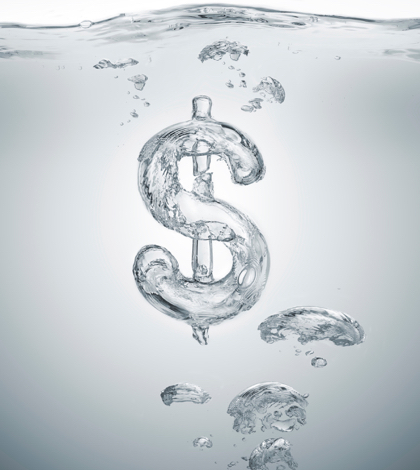In an effort to seek recommendations on how to make water more affordable to low-income Californians, the State Water Resources Control Board will hold a series of meetings in five locations throughout the state from October 12 to November 9.
State law provides that every Californian has the right to safe, clean, affordable and accessible water adequate for human consumption, cooking, and sanitary purposes. The State Water Resources Control Board is developing a plan for a statewide Low-Income Rate Assistance Program, which is required by A.B. 401 (2015, Dodd, D-Napa) to be released no later than February 1, 2018.
The State Water Board is encouraging anyone with ideas on how to develop and implement a statewide low-income rate assistance program to attend and provide comments. The water board is also seeking information about existing rate assistance programs and whether they have been successful in helping people manage their water bills.
One or more of the State Water Board members may be present for the meeting, but no State Water Board action will be taken during the meeting. Spanish interpretation services will be made available at public meetings. Dates and locations for the five meetings are:
Fresno
October 12, 2016 • 6:00-8:00 pm
Woodward Park Regional
Library Meeting Room
944 E. Perrin Ave
Fresno, CA 93720
Redding
October 19, 2016 • 6:00-8:00 pm
City Hall Building
777 Cypress Avenue
Redding, CA 96001
Inglewood
October 26, 2016 • 6:30-8:30 pm
Inglewood City Hall
Community Room
One Manchester Blvd.
Inglewood, CA 90301
Oakland
November 7, 2016 • 6:00-8:00 pm
East Bay Municipal Utility District
375 11th Street
Oakland, CA 94607
Bakersfield
November 9, 2016 • 6:00-8:00 pm
Junior League Community Center
1928 – 19th Street
Bakersfield, CA 93303
The program for the statewide low-income rate assistance meetings and the topics for comments at these meetings include the following:
Nature of the assistance that could be offered by the program
- What is a reasonable amount of assistance to low-income households?
- What form should this assistance take (rebate, bill cost reduction, tax credit, other)?
Program eligibility
- How should a household’s eligibility be determined?
- What other entities besides households should qualify for assistance? (Schools? Day care centers? Health care centers?)
- Should water quality challenges in a community be a priority for granting eligibility? For example, should the additional costs of bottled water be taken into account when water is purchased because tap water isn’t safe?
- What changes should increase or decrease the level of assistance?
- What percentage of income spent on water should trigger eligibility?
- Should enrollment in other programs serve as a basis for which to make an individual eligible? If so, which programs could serve this role: electric utility lifeline programs, telephone lifeline programs, Medicaid, other forms of government aid, other programs?
Program funding resources
- How much revenue is needed for the program?
- How should the revenue be generated; what revenue sources are appropriate?
- How should the revenue be collected?
- How should the assistance be distributed?
- How should the revenue be allocated across customer classes within systems?
Technical administration of the program
- Should the program be administered at the local or state level?
- If at the local level, should it be administered by the water system or by local government?
- If at the local level, should the State Water Board be involved in administration?
- What measures should be in place to ensure proper program oversight?
- How should program performance be evaluated?
To submit written comments to Kathy.Frevert@waterboards.ca.gov. In your email message, please include the following in the subject line: “Comments on low-income rate assistance.” You can also contact Kathy Frevert at 916-322-5274.
For additional information on the Low-Income Rate Assistance Program, or questions regarding this notice, please contact Esther Tracy at (916) 341-5908 or Esther.Tracy@waterboards.ca.gov.
 California Water News Daily Your Source For Water News in California
California Water News Daily Your Source For Water News in California


